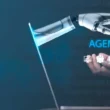An estimated 100 million people globally live with facial differences, and as facial recognition technology becomes increasingly widespread, many find themselves blocked from essential services. This issue was starkly illustrated by Autumn Gardiner’s experience when she attempted to update her driving license in Connecticut following her marriage. Despite her straightforward intention, the Department of Motor Vehicles (DMV) staff struggled to take her photo; the system repeatedly rejected it.
Gardiner, who has Freeman-Sheldon syndrome, a genetic condition that affects facial muscles, felt humiliated as the machine appeared to judge her as not having a "human face." This experience resonated with many others who face similar issues due to facial differences, such as scars, birthmarks, or craniofacial conditions.
These individuals have reported difficulties when accessing public and financial services, often being unable to use online identity verification services designed to include selfies or video inputs as part of the authentication process. Phyllida Swift, CEO of Face Equality International (FEI), voiced the concern that the facial difference community is being overlooked as recognition software becomes a part of everyday life.
Research by FEI has shown that problems with facial recognition systems are common among people with visible differences. The technology often fails to recognize individuals accurately, impacting their ability to engage with services ranging from airport security to online banking. As face recognition algorithms are frequently not trained on diverse enough datasets, people with varied facial features are left at a disadvantage.
Experts assert the current state of these technologies highlights a broader issue of representation. As noted by Crystal Hodges, who lives with Sturge-Weber syndrome, people’s unique facial appearances are not always considered in technological developments, leading to feelings of isolation and frustration.
Noor Al-Khaled’s struggles to establish an online account with the Social Security Administration exemplify this further. Her facial difference led to repeated failures in the verification process, resulting in restricted access to vital records.
In many cases, alternative methods for verification do exist, but awareness and accessibility remain significant hurdles. Advocacy for inclusive design and alternative verification methods continues to grow, as highlighted by FEI representatives working to negotiate better integration of diverse facial features into verification systems.
Gardiner did eventually receive her license but only after staff manually intervened to bypass the problematic system. This experience has not only spotlighted the need for awareness and sensitivity training for service staff but also raises questions about the dehumanizing effects of modern technology on individuals with facial differences, pushing for systemic changes to prevent such embarrassing situations from reoccurring.











